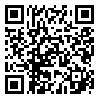BibTeX | RIS | EndNote | Medlars | ProCite | Reference Manager | RefWorks
Send citation to:
URL: http://jdisabilstud.org/article-1-2863-en.html
2- PhD Student in Psychology, Department of Psychology, Faculty of Literature and Humanities, Khorramabad University, Lorestan, Iran
3- Assistant Professor, Department of Clinical Psychology, Faculty of Medicine, Zanjan University of Medical Sciences, Zanjan, Iran
Abstract
Background & Objectives: Neurocognitive disorder is one of the most important symptoms of mood disorders. Previous studies have shown that executive function is significantly impaired during acute periods of depression in bipolar and major depressive disorders. On the other hand, some studies have shown that executive functions in bipolar patients who have not received psychotropic medication in recent weeks or months are not significantly different from healthy individuals. Therefore, studies on the characteristics of executive functions in patients with mood disorders have yielded contradictory results. One of the causes of contradiction is overlooking the effects of psychotropic medication and the clinical characteristics of patients as influential factors in their executive functions. Therefore, this study aims to compare the differences in executive functions of patients with major depressive disorder and bipolar patients in the depressive phase (both groups without a history of drug use) and its relationship with their clinical features.
Methods: The study method was causal–comparative. For the patient group, the statistical population included all major depressed and bipolar patients referred to the Sohrevardi Clinic in Zanjan City, Iran, in 2021. For the control group, the statistical population consisted of normal people who lived in Zanjan in 2021. The study sample consisted of 90 people (30 depressed patients, 30 bipolar patients, and 30 normal people). They were selected by the available sampling method based on the inclusion and exclusion criteria. Demographic and clinical information of patients were collected with self–report forms. This information included age, gender, education, number of periods of mood disorder, mania/hypomania periods, depressive mood periods, total duration of the disorder, and duration of the current depressive period. Also, all samples were assessed by Structured Clinical Interview for DSM–5 (First et al., 2016), Beck Depression Inventory–II (Beck et al., 1996), Young Mania Rating Scale (Young et al., 1978), The Stroop color–word test (Stroop, 1935), and the Wisconsin card sorting test (Berg, 1948). The Kruskal–Wallis test was performed to compare the differences in age and education between the three groups. The clinical data were compared using the Mann–Whitney U test. Group differences in Stroop Color–Word Test and Wisconsin Card Sorting Test indices were tested by analysis of covariance (ANCOVA), with age and education years as covariates while groups and gender were fixed factors. Least Significant Difference (LSD) was used as the post hoc multiple comparisons to identify the differences between groups. The correlations between executive function and clinical variables were identified using partial correlation analysis. Statistical analyses were performed in SPSS software version 23 at a significance level of 0.05.
Results: In bipolar patients, only the number of missing in the Stroop Color–Word Test was more than the control group (p=0.047). In the group of depressed patients in the Stroop Color–Word Test, the number of correct items was lower, and the number of missing was higher than in the control group (p=0.017) and more missed answers (p=0.005) in comparison control group. Also, the group of depressed patients in the Wisconsin Test showed more total number of answers (p=0.032), more percentage of errors (p=0.045), less percentage of conceptual answers (p=0.015), less number of completed classes (p=0.014) and more failure to maintain classes (p=0.037) compared to the control group. Depressed patients had a poorer performance in the percentage of errors (p=0.039) and percentage of conceptual answers (p=0.040) in the Wisconsin test compared to bipolar patients. In bipolar patients, no correlation was found between the indices of Stroop and Wisconsin tests and the clinical characteristics of the patients (p>0.05). In depressed patients, the number of episodes of mood disorder has a significant correlation with the percentage of errors (p=0.002), the percentage of continuous answers (p=0.001), the percentage of conceptual answers (p=0.002), and the number of completed classes (p=0.007) in the Wisconsin Test.
Conclusion: According to the findings, executive functions in depressed patients are weaker than in bipolar patients. Although the executive functions in depressed patients are weaker than the control group, the performance of bipolar patients is comparable to the control group. The executive functions of bipolar patients are probably related to the length of the current depressive episode. In comparison, depressed patients are affected by the number of past mood episodes.
| Rights and permissions | |
 |
This work is licensed under a Creative Commons Attribution-NonCommercial 4.0 International License. |




